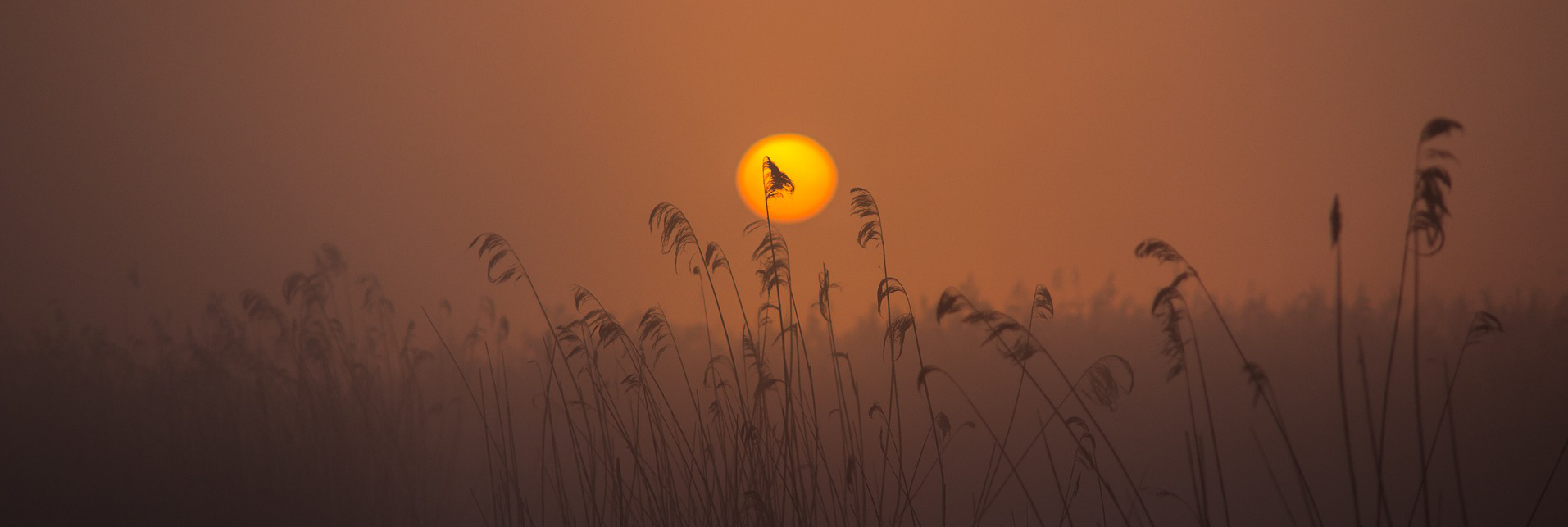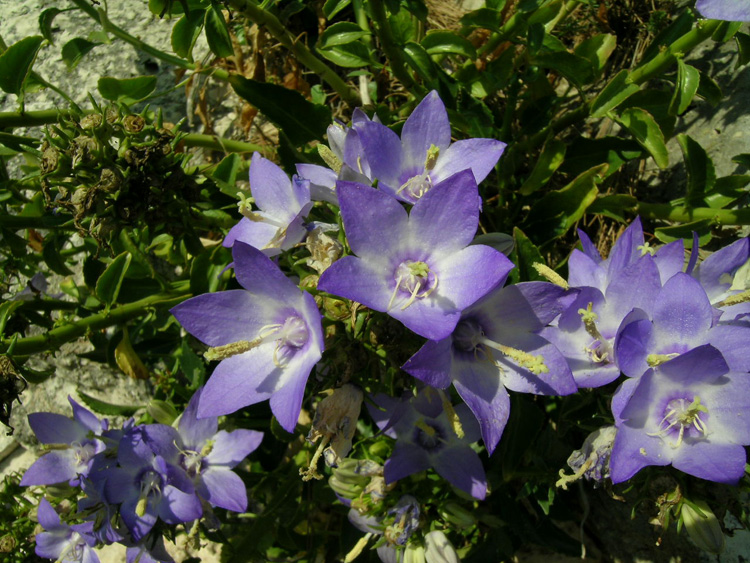
Climate change makes the August sun increasingly hot, the countryside is now dry, but the flowers never stop opening and, indeed, we see them appear in conditions that seem incredible to us. This is the case of the Apulian Bellflower (Campanula versicolor). The intense blue color of the campanulate corollas appears, together with the bright green fleshy leaves, from the cracks and crevasses of the limestone cliffs of the lower Adriatic and Canale d’Otranto cliffs and on the walls of the “Gravine delle Murge” of Sud -Eastern Italy, up to Matera. The beautiful flowering, which begins in July and lasts all summer, revives a habitat that, by its nature and by the season, would otherwise be barren and devoid of any color.
The habitat of the species is in fact represented exclusively by rocks, of which it colonizes cracks and crevasses, but the Campanula can also be found on walls, old buildings, and artifacts of all kinds, as long as they are made with the same material of calcareous origin.
The Apulian BelFlower, although not an endemic species, in Italy is almost exclusively limited to the Apulian territory; the main distribution area is located in the Balkan peninsula.
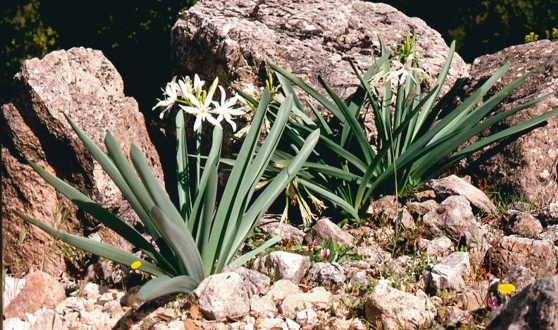
The Pancratium illyricum also blooms among the rocks. It is an endemic species of the Cyrno-Sardinian region which includes Corsica, Sardinia, and the Tuscan Archipelago. Its close relative is the more common Sea daffodil (Pancratiumo maritimum), which prefers to open its large, delicately scented white flowers on the dunes throughout the Mediterranean basin. The seeds of this species are very light (so much that they look like small pieces of black polystyrene) and float, so that the dissemination takes place both by means of the wind and through the sea currents.
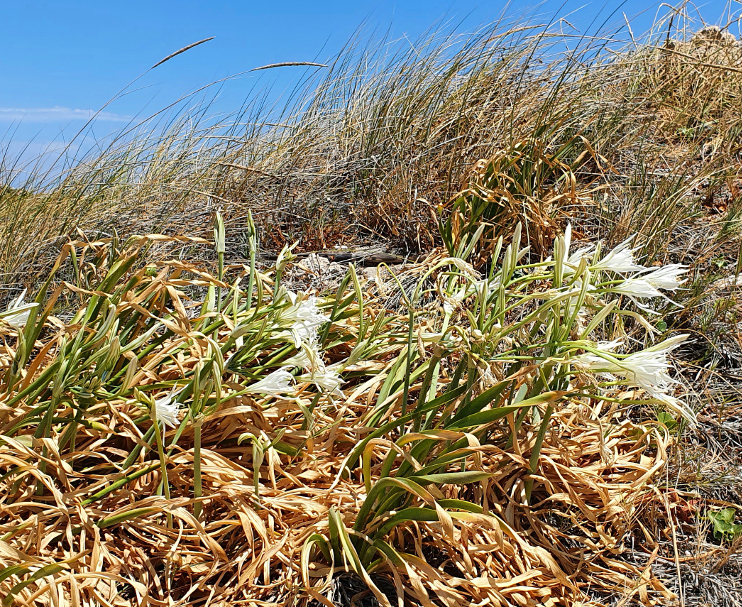
On the same Mediterranean dunes, the common and very thorny Echinophora spinosa continues to bloom from June with white umbrellas, while from July the stony coasts and low cliffs host the small umbrellas with small white-yellowish flowers of the Rock samphire (Crithmum maritimum). This species, which also grows on the piers, is edible and goes well with fish dishes. It is widely used in the Park of Conero; the problems connected with the collection of spontaneous plants, protected by the Park regulations, are easily overcome by cultivating the plant in pots or in the vegetable garden. Also in Salento and on the island of Mallorca, Rock samphire is widely used in cooking, while in Corsica an essential oil is obtained from it.
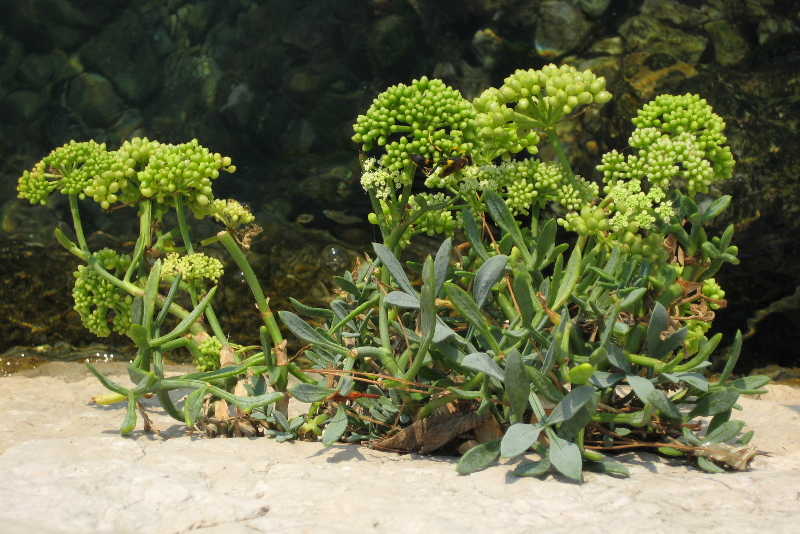
Wild fennel (Foeniculum vulgare), even if with a very similar scent and flavor, and despite having the same common name, is a species very distant from the sea fennel. The small yellow / greenish flowers are gathered in apical umbels and bloom while the cicadas fill the air with their chirp.
Everything of this species is used and every Italian region makes a particular use of it. The flowers are used to flavour boiled chestnuts, baked or pan-fried mushrooms, olives in brine and pork, in particular the “porchetta” of Upper Lazio and Umbria. In Tuscany it is used to flavor and perfume “finocchiona”, a typical salami. The so-called “seeds” (actually they are the fruits) are used above all to flavor the exquisite Apulian taralli, donuts or other homemade desserts and to spice hot wine, herbal teas, and pickles. In Piedmont they are part of the recipe for “finocchino”, a typical biscuit. In the coastal regions of the Tyrrhenian Sea it is essential to produce the “fennel liqueur”.
Particularly fragrant and also used for culinary purposes is the Headed savory (Thymbra capitata), which in this period sees its last small and tubular flowers open, gathered in graceful inflorescences, with colors ranging from white to pinkish-purple. This species is also very common throughout the Mediterranean basin and, living in particularly hot and arid environments, it often assumes a “pillow” (pulvinus) habit.
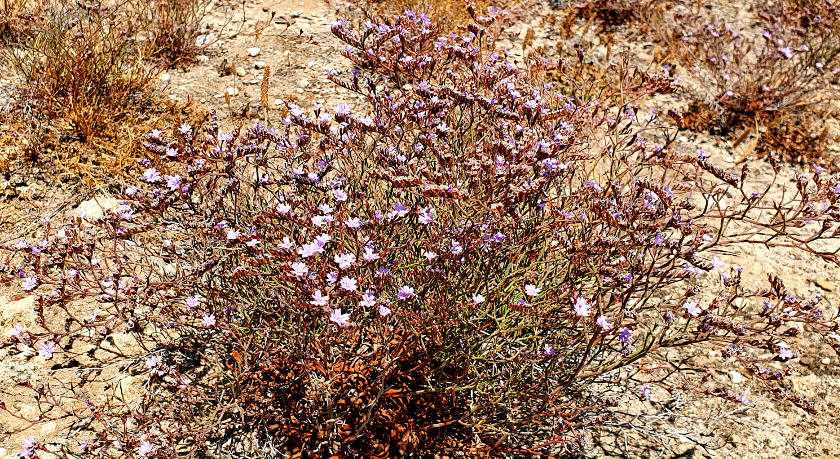
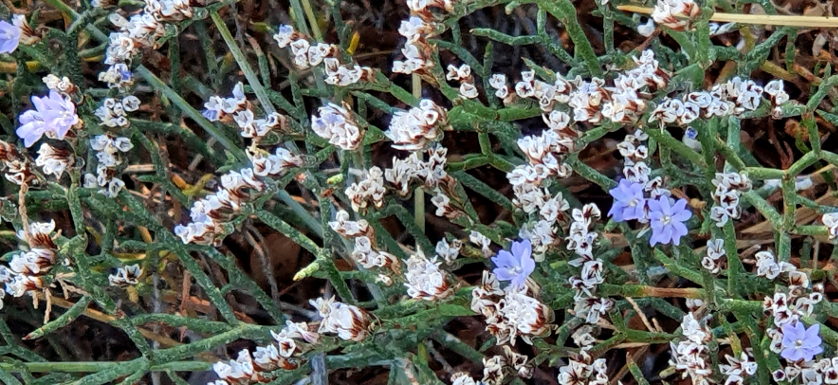
Throughout the summer, cliffs and cliffs are embellished by the blooms of the various species of Statice (Limonium spp.). Although the scorching sun and the reverberation of the rocks burn the leaves, the flower scapes allow small, delicate and numerous flowers ranging from light blue to pink to open.
Dozens of species and subspecies belong to this genus, which tends to “endemize”, that is, to become new species found in very small areas. The phenomenon is due not only to the genetic plasticity that characterizes this genus but also to the fact that isolated microhabitats with peculiar characteristics are easily created on the cliffs. So much so that in some cases it is possible to observe more endemic forms distant from each other only a few tens of meters.
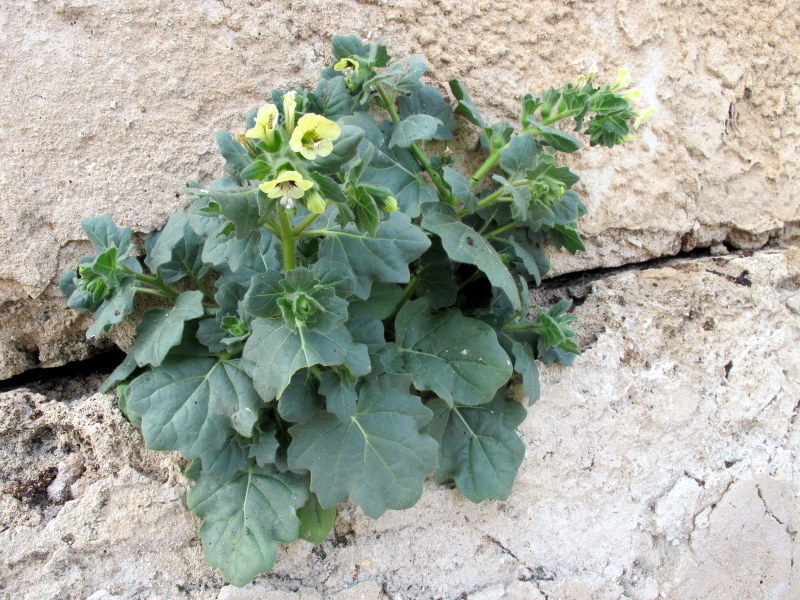
Stony, sandy or uncultivated soils, ruins and rubble often host a very pretty plant, with pale yellow flowers inside, highly toxic to humans: the Nightshadewhite henbane (Hyoscyamus albus). The leaves, seeds and roots contain mainly two alkaloids: hyoscyamine and scopolamine, which transform into atropine during heating or drying of the parts. Their ingestion causes drowsiness, deep sleep and can even cause death. The distribution area of this species, despite being centered on the Mediterranean coasts, extends northwards and eastwards, coinciding with the area of the vine. The Cocklebur (Xanthium strumarium) usually accompanies the henbane, which has separate and morphologically diversified male and female flowers, difficult to identify because their greenish color means that they are poorly distinguished from the rest of the plant.
Also the Apple of Sodom (Solanum linnaeanum), which in this month shows off beautiful purple flowers gathered in corymb inflorescences, has fruits that contain a highly toxic alkaloid: solanine. This species, which loves sandy soils, owes its common name to a legend linked to the biblical episode of the Sodom fire, following which the region would have become totally sterile. The “apple of Sodom” was the only plant that the divine will allowed to grow: in fact, it produced fruits that were apparently beautiful and inviting, which however contained only ash and smoke.
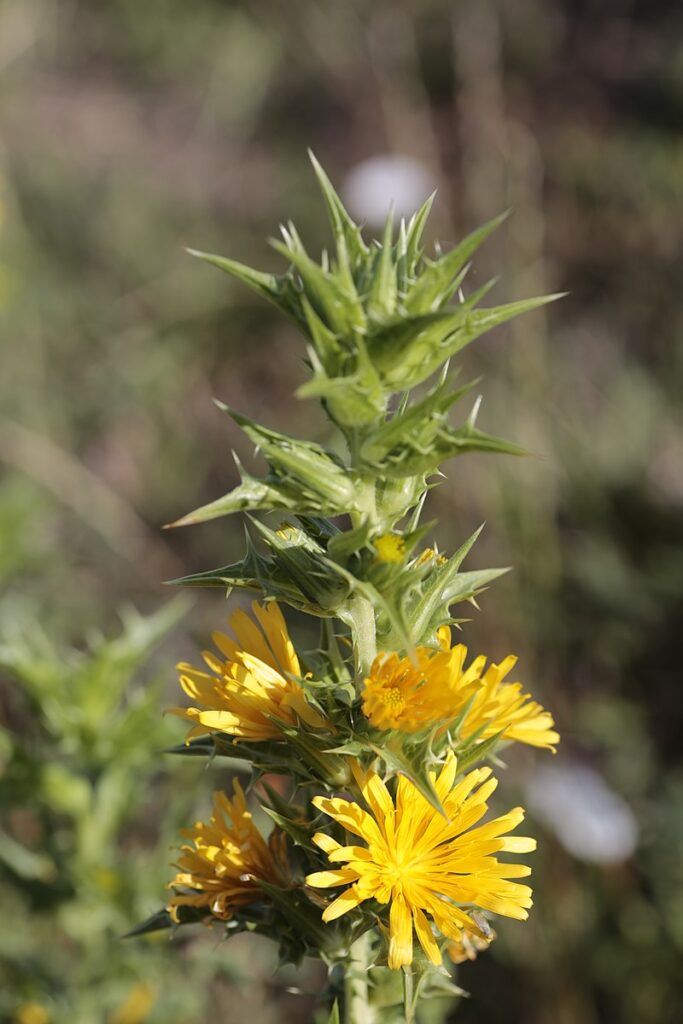
The August blooms, as you can guess from what has been said so far, have two fundamental characteristics: aromaticity and thorniness, two ways to defend flowering plants from grazing, at a time when the grass is now almost completely dry. Thorniness is the characteristic that unites the last two species that we want to remember: the Spanish salsify (Scolymus hispanicus) and the Wood Asparagus (Asparagus acutifolius).
The Spanish salsify is a herbaceous plant widespread throughout the Mediterranean basin but not very common; it is bushy, with green leaves with white veins and deep teeth with strong thorns. The inflorescences are terminal bright yellow flower heads, composed of hermaphrodite flowers.
The well-known Asparagus is a characteristic plant of the Mediterranean Macchia, very common at the edges of the woods, in uncultivated places and in areas affected by fires.
Its bitter-tasting sprouts are on the tables of all of us at least once a year and we all have the small thorns of this lianosa species at least once in our life while we steal its sprouts.
Maria Beatrice Lupi talks about the splendid blooms of Caper (Capparis spinosa) in her article dedicated to this species that marks not only the territory, but also the cuisine of the Mediterranean peoples.
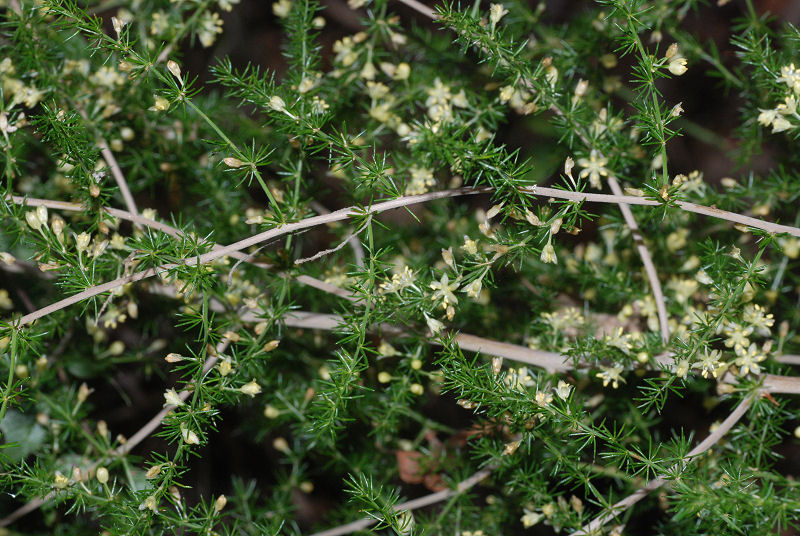
Credits:
Author: Anna Lacci is a scientific popularizer and expert in environmental education and sustainability and in territory teaching. She is the author of documentaries and naturalistic books, notebooks and interdisciplinary teaching aids and multimedia information materials.
Translation by Maria Antonietta Sessa

